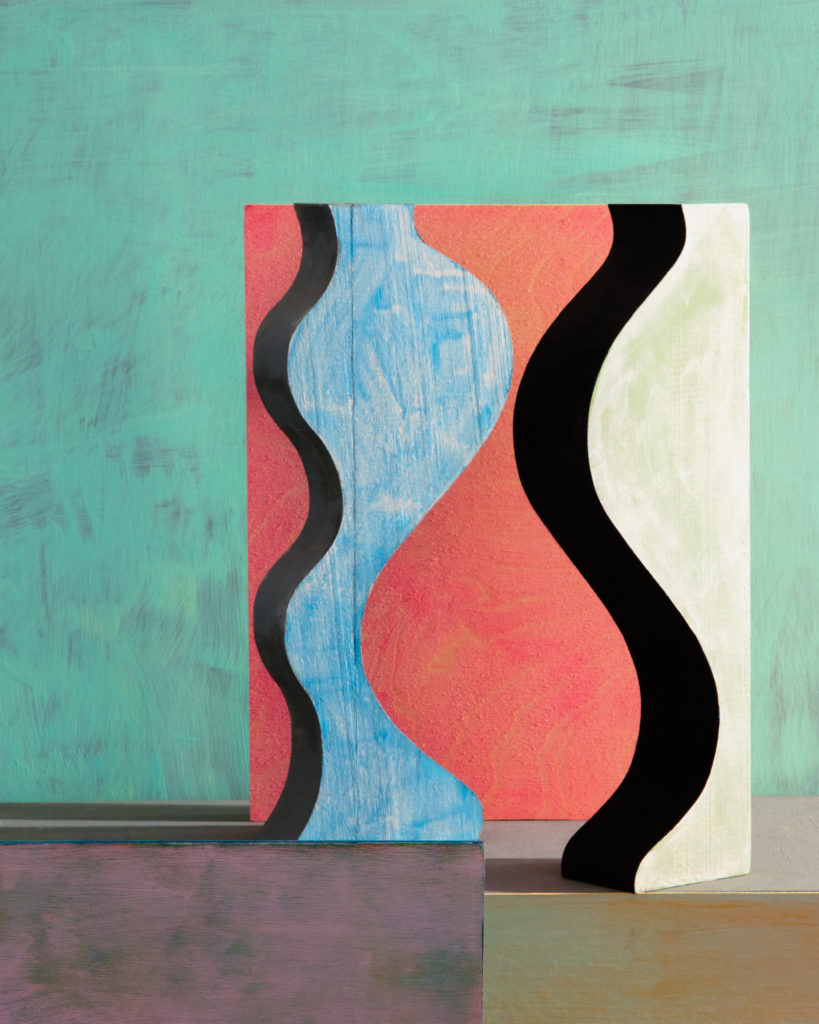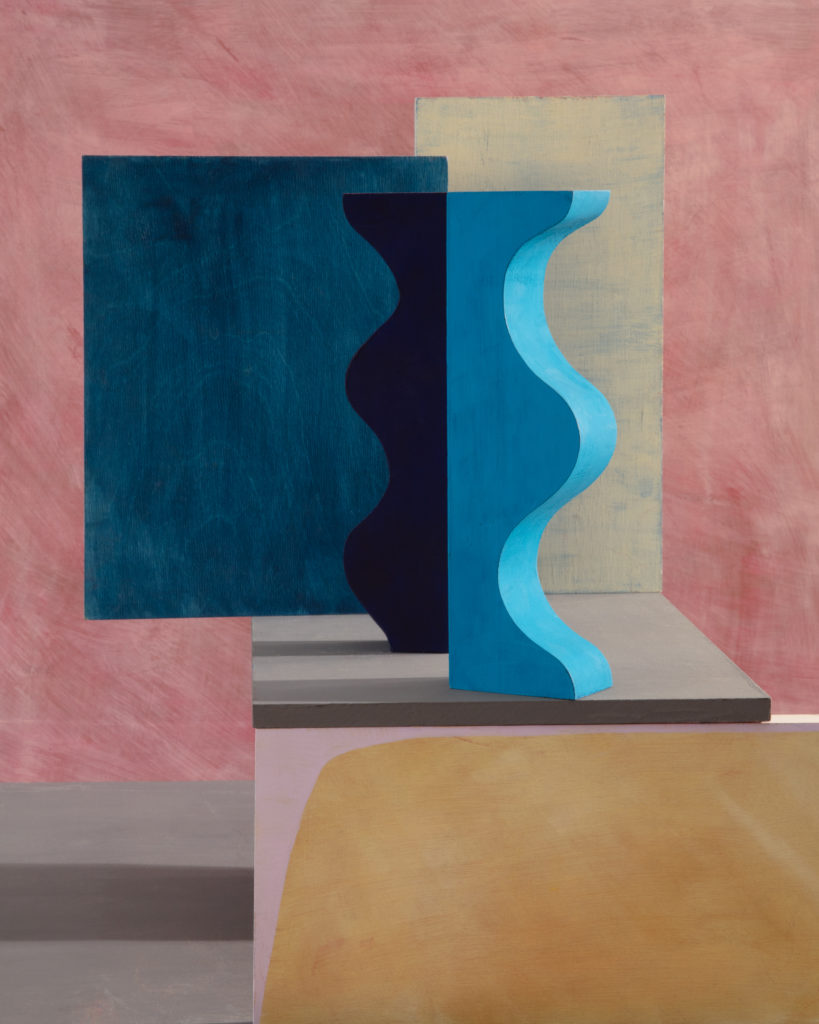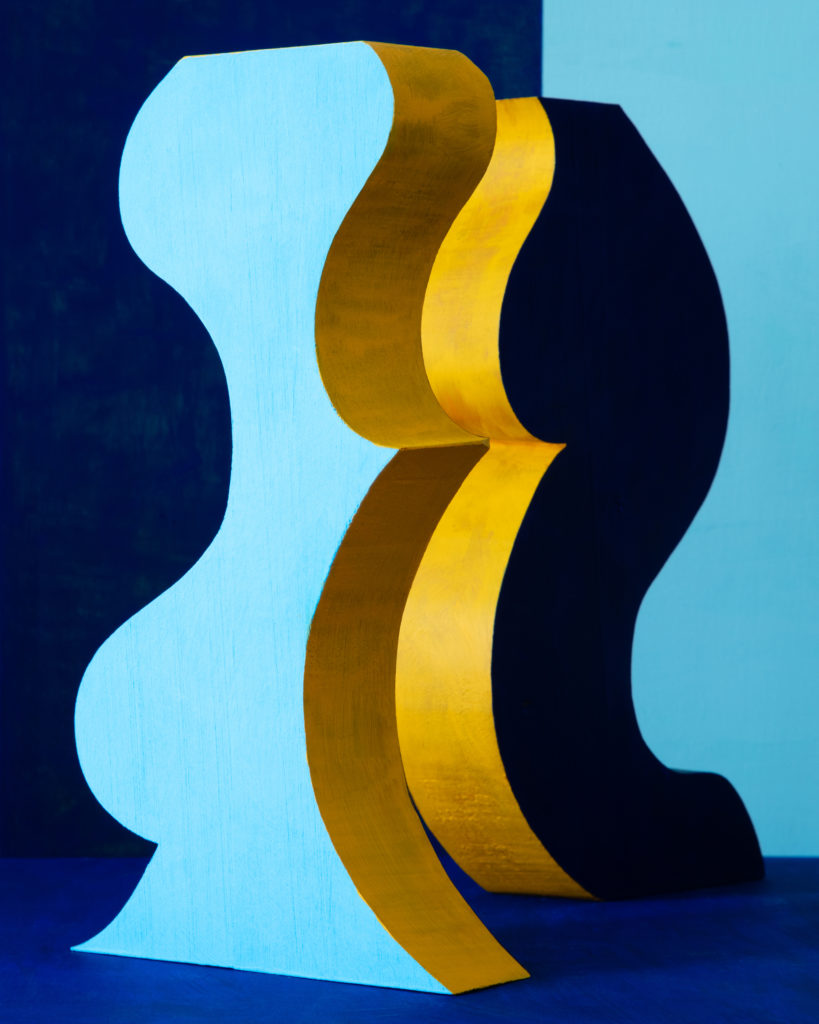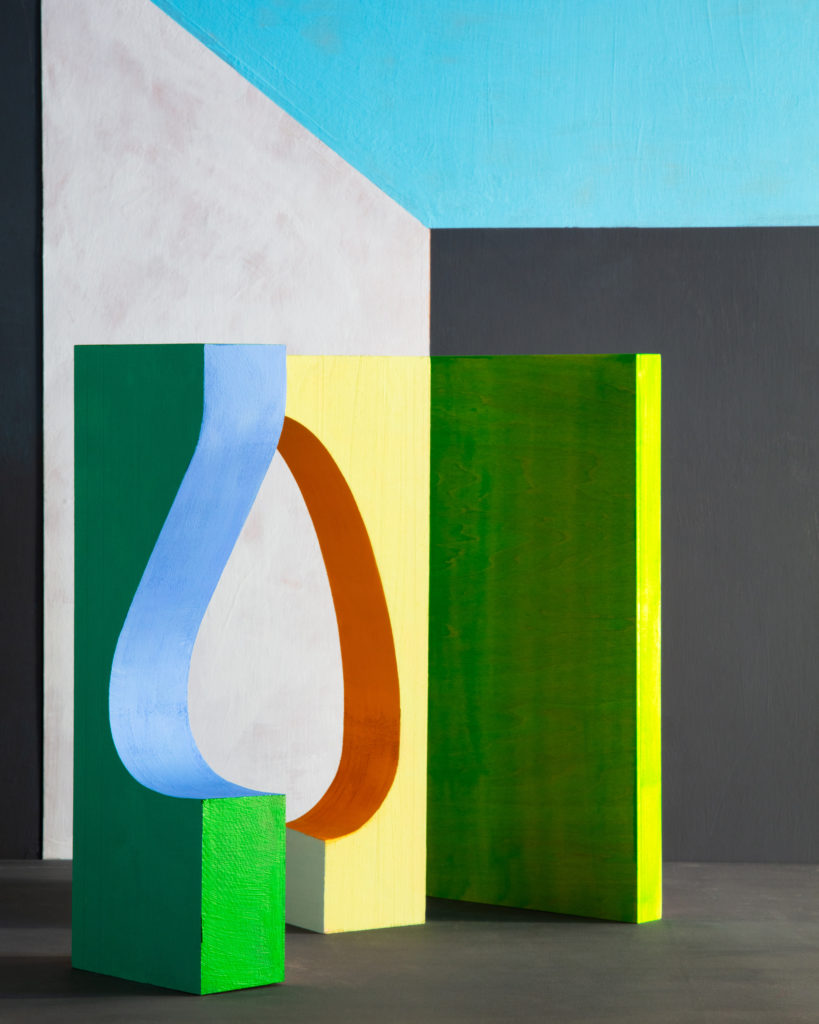There’s more to Erin O’Keefe’s still lifes than meets the eye

A bright and vibrant colour palette doesn’t often figure into the oeuvre of a trained architect, but for the artist Erin O’Keefe, who not only studied architecture but has taught it as well, the power of colour couldn’t play a bigger role in how she perceives space.
‘I taught for 23 years as an architectural professor and as part of that, I was teaching the Albers’ colour [theory],’ says the artist. [Both] teaching and thinking about that as a two-dimensional thing and wanting to see it as a three-dimensional thing was really a jumping off point for me. Colour is really embedded in the way I think about space.’
Known for her abstract and vivid compositions, O’Keefe’s works are often mistaken as paintings. In actuality, they are photographs of painted, still-life arrangements of objects that she has made, the visual tension between contrasting planes that weaves through her pieces is much pronounced in a new body of work, on view at Denny Dimin Gallery in New York’s Tribeca neighbourhood.
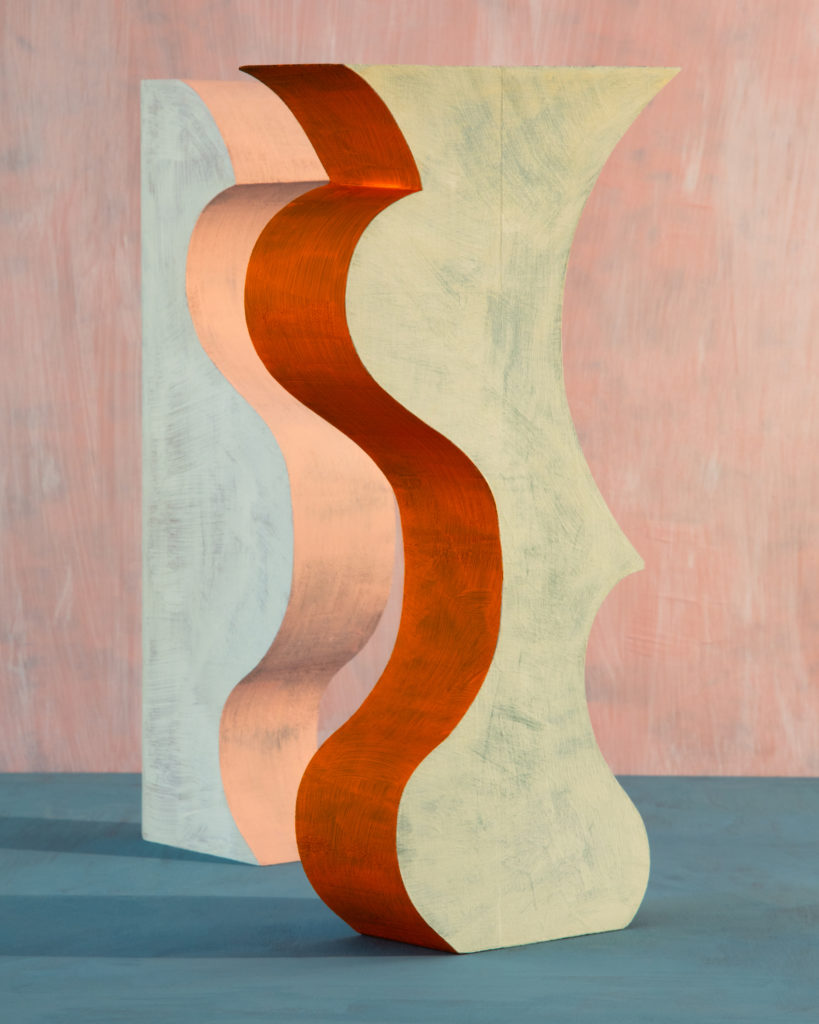
Appropriately titled ‘Seeing Things’, O’Keefe’s latest effort brings an added layer of dimensionality to her experimentation with perspective. Where her past works often toyed with transparency and mostly flattened planes, the new images on view involve jigsaw puzzle pieces and sculpted wooden blocks (all designed by the artist) that curiously appear to warp and fuse together in a series of photographs that trick the eye.
‘I’ve been working with planes of colour, and this sense of weight, opacity and tactility for a while. The imperfections of these [blocks and planes] are really interesting to me,’ explains O’Keefe, who became preoccupied with curved forms and their possibilities. ‘In some cases you will see things really flatten out and in some cases, they become more spatial in a way that’s hard to discern. It opened up this whole other way of how an image works and how you translate something that is real into an image.’
Because of the interplay of light on the objects – the textural brush strokes visible on the painted surfaces and backdrops, coupled with the carefully arranged compositions – O’Keefe’s images deliberately depict an ambiguous spatial relationship between each of the individual components that veer in and out of real space.
The artist says, ‘There’s a really funny dance that they do, which you wouldn’t see if it weren’t an image of the thing. That sense of confusion, disorientation or misreading of the [blocks] is then paired with a very tactile, direct and understandable surface. You think that you are looking at one thing, but you’re not.’
O’Keefe’s play with perception also manifests itself in a new series of sculptures – the first she has exhibited in over a decade. Comprising box forms that incorporate clever placements of mirror and coloured planes, the sculptures extend, invert and displace space, folding together the built and reflected realms in thoughtful and playful continuation. §
